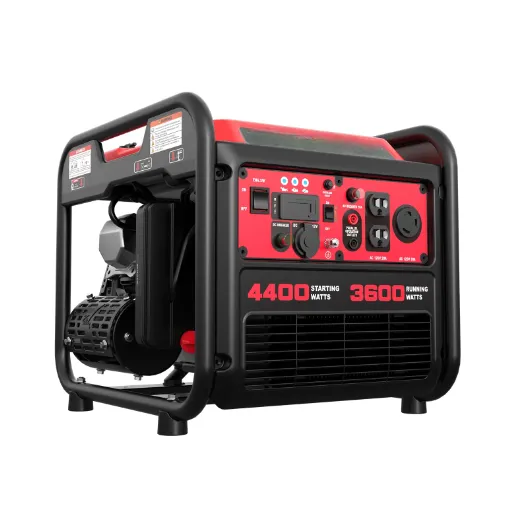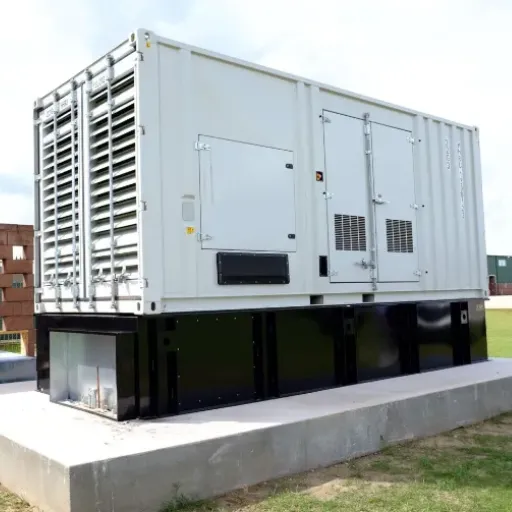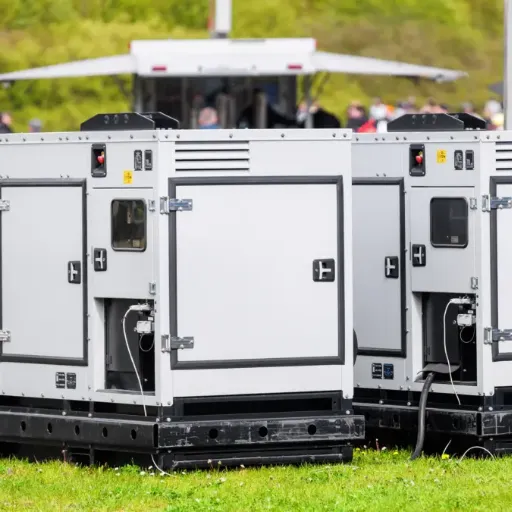Portable generators are an essential tool for modern construction jobsites, offering reliable, on-demand power to keep operations running smoothly, even in remote or off-grid locations. Whether you’re powering heavy-duty equipment, charging tools, or ensuring critical systems stay functional, the right portable generator is a game-changer for efficiency and productivity. However, with so many options available, finding the perfect model to meet your specific job site needs can be a daunting task. This article will guide you through the best portable generators on the market, detailing the key features, performance metrics, and considerations that construction professionals should prioritize to maximize both power and reliability.
How to Choose the Right Construction Generator?
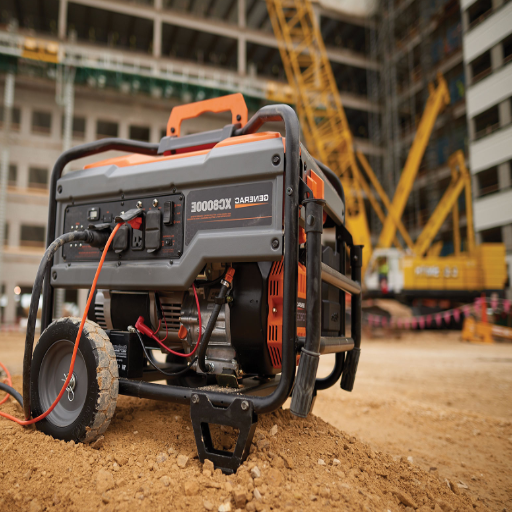
What Factors Determine the Best Generator for Construction?
While picking a generator for construction works, utmost care and consideration are required for efficiency and effectiveness. First of all, power ratings and wattage output must be considered. To determine the wattage requirements for your equipment, summing the calculation of all the starting and running watts is important to figure out the tools you would like to operate simultaneously. Moreover, to guard against overloading, it is always advised to use a generator with surplus capacity.
Next, the use of equipment and operational costs will require the consumption of fuel. Fuel categories include gasoline, diesel, and propane. For heavy-duty construction needs, diesel generators are the best to go for as they outperform in fuel efficiency and longevity. Moreover, even examining some other fuel factors like emissions caps, proposed by propane, will be helpful. Moreover, to avoid void operation during high working hours, ensure examining the run time and capacity of the generator’s fuel tank.
Additionally, build quality and dhurability have become essential for construction sites. To shield the important parts from damaging weather conditions, models crafted with heavy frame materials, guarded casings and resistant enclosures ensures their safety. For the safety of fragile power tools from the generators, look for units with low THD or total harmonic distortion as this greatly reduces the risks of damages.
Last, portability and noise levels should be matched to the requirements of the specific site. Quieter models that use noise-dampening technology comply with regulations or reduce interference in sensitive areas, while less portable versions with wheeled frames and foldable handles are light and easy to transport. Balancing all these considerations with budget and jobsite needs enables professionals to select the best generator that guarantees seamless and reliable operations.
Do You Need a Portable Generator or a Standby Unit?
Evaluating operational and situational prerequisites is crucial before choosing between a portable generator and a standby unit. Portable generators are intended to be versatile. They are particularly useful during small commercial operations, outdoor events, or temporary power interruptions where there is intermittent power demand. These lightweight and compact generators offer a power output of 2 kW to 15 kW, which is sufficient to run various tools and appliances. Most portable models today have advanced inverter technology that produces clean and stable power output suitable for sensitive electronics.
Those, like standby generators, are permanent installations intended for high-demand or continuous power applications, including residential homes, health care facilities, and industrial operations. These units automatically switch on within seconds of a power outage, providing seamless power restoration. Standby generators have 7 kW to over 150 kW output capacity and are connected through an external fuel source such as natural gas or propane. These generators also interface with automatic transfer switches, which are not ATS. This type of reliability does come at a cost, however, as standby generators require professional installation and regular maintenance.
Your budget as well as your intended purpose are the deciding factors. While standby generators offer flexilbility and cost effectiveness, they provide a long term solution for dependable high capacity high critical power needs.
How Does Wattage Impact Generator Selection?
As with any power equipment, a generator’s output capacity determines the applications it can power. Generator wattage is categorized into two types: starting or surge wattage and running wattage. Starting wattage, also known as surge wattage, is the power necessary to initially start appliances with motors that draw power while running. Running wattage refers to the level of power that must be supplied on an ongoing basis to keep the appliances working. The generator must be estimated precisely; otherwise, there is a risk of overloading the generator, resulting in system failure, damage to other devices, or disruption of services.
Incorrect power supply estimation can overload the generator, leading to damage to users who rely heavily on running power during peak times when the generator’s running power is undervalued or overvalued, requiring frequent system resets. To avoid these challenges, users should calculate the total running wattage of all the major devices needed for operation and add the maximum surge wattage required by the device that will draw the most power. Most household devices, such as refrigerators, air conditioning units, and sump pumps, can be cited as examples of appliances that draw higher starting wattage than steady wattage.
Alongside these factors, high temperature or high altitude settings, and other extreme environments, can also cause excessive stress for a generator. For most uses, a generator that is 10-20% over the calculated capacity will be sufficient, and for more complicated cases, sophisticated load management systems available for commercial use can automate optimizing power outputs for longer time frames.
What Are the Different Types of Generators for Construction?
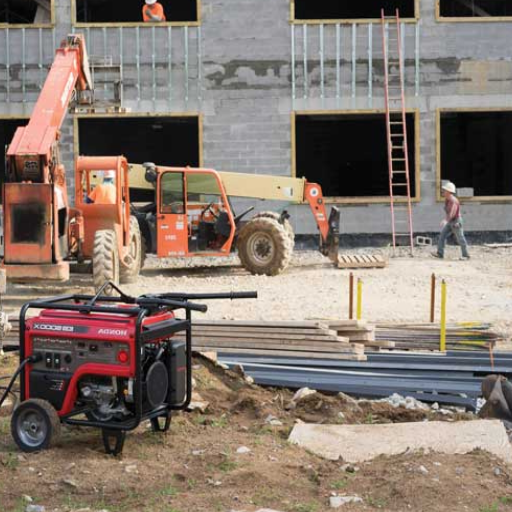
Why Consider a Gasoline or Propane Model?
The versatility, availability, and performance of propane and gasoline generators make them popular for construction holds. Gasoline models are specifically advantageous for short-term projects because they are powered by an easily accessible fuel source. Gasoline provides high energy density while also being portable, which makes it easier to be used in smaller-scale operations. Construction tools and equipment can be easily powered with gasoline generators.
Propane models, on the other hand, have distinct advances in fuel stability and environmental performance. Unlike gasoline, propane does not degrade over time, which makes it ideal for long-term storage. In construction settings, propane emits fewer harmful pollutants and contributes to cleaner construction. Compared to gasoline, propane engines also operate more quietly, which is a valuable feature in noise-sensitive areas.
The decision on whether to use propane or gasoline to fuel the generator, fuel availability, storage conditions, operational cost, and environmental impact all have to be considered. Choosing the right type of generator for your construction needs will optimize performace and efficiency on site.
Are Dual-Fuel Generators a Better Choice?
Due to their ability to operate on both gasoline and propane, dual-fuel generators are growing in popularity on construction sites and in other demanding industries. This flexibility permits users to switch fuel types based on availability, cost, and specific project needs. For instance, dual-fuel generators enable users to sustain operations during emergencies or in remote areas where propane is much more available than gasoline.
Dual-fuel generators can be more economical for the long-term since operators can switch fuels to take advantage of price differences. Propane is less expensive and emits less greenhouse gas than gasoline, and because it’s easier to store and has a longer shelf life, it’s the best option for projects that need to be prepped in advance. On the other hand, operators can rely on gasoline when high performance and faster energy output are needed.
The latest models of dual-fuel generators come with sophisticated dual-fuel switches that ensure continuous fuel management optimization. Although these units are more expensive initially, the benefits in operational efficiency, fuel flexibility, and environmental impacts make it worth it in the long run. Assess operating site conditions, refueling, and power demand, and determine if a dual-fuel generator is right for your needs, before choosing a generator.
Understanding the Role of an Inverter Generator on Site
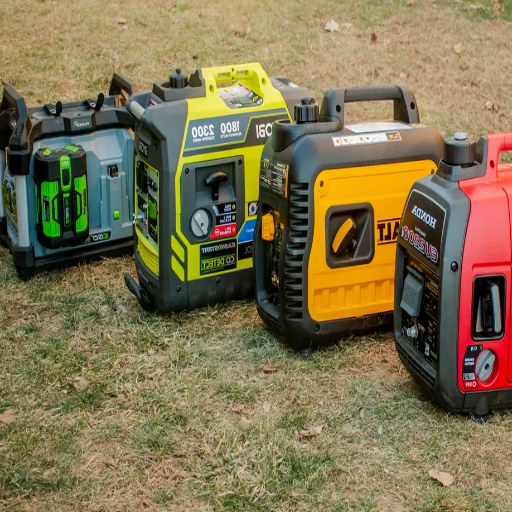
Benefits of Using an Inverter Generator
Inverter generators offer clean, stable power output which is critical for sensitive electronics and machinery to function properly. Unlike conventional generators, inverter models employ advanced electronic circuitry and magnet technology that deliver consistent, reliable current to aid precision equipment, and prevents voltage fluctuations.
There are many other pros of inverter generators, such as their exceptional fuel efficiency. By employing a throttle system that alters engine speed according to the required load, inverter generators reduce operational expenses and environmental impact due to minimized fuel consumption. This adaptive engine control also helps extend runtime while optimizing energy use to variable demands on-site.
With regards to traditional generators, inverter generators reduce noise pollution and provide greater comfort. Utilizing sound-dampening materials and innovative engine mechanics, inverter generators operate at much lower noise levels. This makes them ideal for construction sites that are located in residential areas, as well as for leisurely activities such as camping.
Equally important, the compact and light designs of inverter generators make them very portable. Their portability, combined with the ability to connect in parallel for greater output, means that power needs can be increased without loss of mobility. Because of these reasons, inverter generators are a technologically advanced option for many applications, due to their high levels of efficiency and low noise levels.
When to Opt for an Inverter Generator
Picking an inverter generator is especially beneficial in cases where its efficiency, portability, and stable power output are most needed. Because of the level of clean and steady energy they can produce, with total harmonic distortion (THD) often below 3%, these generators are suitable for sensitive electronic devices like laptops, tablets, televisions, and medical equipment. This careful power supply ensures that delicate devices do not suffer damage from sudden bursts or changes in power.
Inverter generators are a necessity for outdoor activities such as camping, RV trips, and tailgating due to their compact size and quiet operation. They are now more popular than ever as a backup power source for homes, facilitating the use of essential appliances like refrigerators, lighting systems, and small heaters. The ability to connect several of these units in parallel configurations offers an easily portable solution for users requiring additional wattage.
Modern technology places emphasis on fuel efficiency, focusing on the use of smart throttle systems which adjust engine speed to throttle load, greatly minimizing fuel consumption and emissions. This not only makes inverter generators cost effective in the long run, but also allows them to adhere to stricter eco friendly regulations. Striking a balance between minimal upkeep, maximum effectiveness, and ease of use, inverter generators are an optimal choice for both residential and portable settings.
How to Ensure Safe Operation of a Portable Generator?
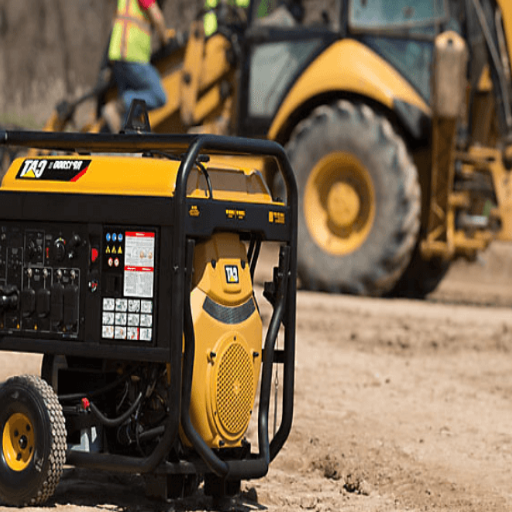
What Precautions Prevent Carbon Monoxide Poisoning?
Safety measures should be observed with utmost consideration to avoid carbon monoxide poisoning while using a portable generator. It is crucial to use the generator only outside, in open spaces, and well-ventilated areas, and place it at 20 20-foot distance from all windows, doors, and vents to prevent generator exhaust fume inflow into living spaces. Generators should never be operated indoors or in any enclosed spaces such as garages, basements, or crawl spaces due to the propensity for rapid CO accumulation; the opening of doors and windows does not change exhaust CO levels.
An adequate level of safety comes from having an operational CO detector or CO alarm on the generator which will aid in informing users of increasing CO levels. Depending on the generation, a portable generator CO sensor may be included to turn the engine off when high CO levels are reached. Any available safety features should be utilized as frequently as possible.
Taking proper measures greatly reduces the possibility of generator fume emissions without compromising its operability. Using only manufacturer-provided parts ensures avoiding damage to the generator’s exhaust system. The set standards not only reduce operational risks and dangers of CO poisoning, but also attempt to ensure compliance with enabling national safety compliance standards.
How Does a Transfer Switch Protect Your Equipment?
A transfer switch is key in maintaining the safety and reliability of systems that engage backup power sources, as it manages the power load of the utility grid and the generator to prevent hazardous backfeeding and damage to equipment. The switch can accomplish this daunting task because it automatically shifts the power supplied from the utility to the generator when a power outage is detected, allowing for smooth transitions and reduced downtime.
The switch transfer device ensures delicate equipment is safe from harm’s way by safely isolating each power source to avoid power surges, fluctuations, and other electronics issues that can arise during unstable power transfers or manual switching. Properly rated transfer switches are put in place to limit the possible risks associated with the unintentional transfer of power within the system by overloading the components. This is achieved by configuring the switch to the appropriate threshold of the electrical generator and the electrical load within the device while remaining compliant with National Electrical Code (NEC) guidelines.
Also, more comprehensive features are present in advanced automatic transfer switches (ATS), such as built-in monitoring capabilities, which keep track of the generator’s parameters as well as the utility power supply. Aids such as these improve operational reliability thanks to flexible commands and multi-controlled precise guard mechanisms that tremendously reduce harm done to vital infrastructure, operational expenses, and the life expectancy of the backup generator and powered devices.
What Role Does a GFCI Play in Safety?
A Ground Fault Circuit Interrupter (GFCI) serves as an electric shock preventative and fire hazard control. It does this by constantly checking the current flowing in a circuit, tripping the power in case of any detected imbalance between the hot and neutral conductors, which typically signifies a fault condition. Severely dangerous situations, including life-threatening circumstances, can occur when a person comes into contact with electricity flowing outside its intended route, wherein cutting it off promptly can help avert dire consequences.
GFCIs are needed most in places where water and electricity may come in contact, such as kitchens, bathrooms, and outdoor areas. These are required by the National Electrical Code (NEC) to avoid potential dangers due to moisture in these locations. Modern GFCIs can now trip when a fault is detected, which greatly reduces the possibility of harm. Moreover, GFCIs are now designed in a way that allows them to conduct self-tests and continuous monitoring, ensuring the standards are met and maintained in the long run.
GCFIs integrate dependable performance and advanced features to protect residential and commercial electrical systems, users, and equipment from potential electrical dangers. Implementing them is fundamental to holistic electrical safety measures.
What is the Best Power Equipment Setup for a Construction Jobsite?
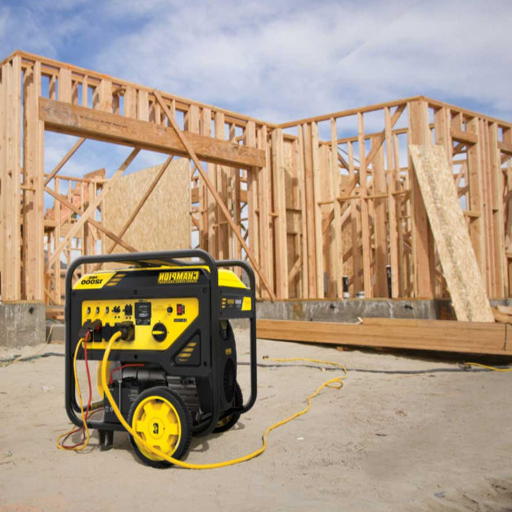
How to Optimize Power Output for Power Tools?
Combining productivity and efficiency when powering tools at a construction job site requires consideration of on-site requirements as well as equipment power compatibility. Begin the power evaluation process by calculating the total power consumption of all tools, which includes the running and starting load for circular saws, drills, and compressors. The power distribution box or electrical panel, as well as the generator, must be capable of all peak demands without tripping any circuits. The use of power-rated heavy-duty connectors for extension rods ensures minimal energy loss as they protect in job site conditions.
Power tools operate more effectively with lower consumption energy when paired with newer models featuring brushless motors. Improved reliability and efficiency can be achieved by matching the appropriate battery level to cordless tools or while using aute powered options. Optimal performance over time relies on the maintenance schedule placed on both the power supply equipment and the tools used.
Lastly, power irregularities that may damage tools or interrupt operation need to be guarded against with jobsite circuit protection devices like GFCIs and surge protectors. Thoughtful power distribution planning minimizes downtime, enhances productivity, and is an essential facet of construction jobsite setup.
Can a Portable Power Station Be a Viable Option?
The use of power for construction sites, remote areas, and emergencies that require power has now become easy with the invention of power stations, which are both effective and efficient. Modern portable power stations contain multiple output systems, including USB, standard AC outlets, and even 12-volt DC ports. All of these features enable them to be used with different types of equipment. Additionally, they use lithium batteries and state-of-the-art inverter technology to provide balanced AC and DC outputs for a wide variety of power tools.
They can be easily transported to remote areas without worrying about access to gas and electricity. There is also the benefit of them being noiseless, as there is no sound produced when using the gadgets. Using power stations also causes no pollution, so there is no concern when using them indoors or in areas with strict environmental policies. Depending on the model, many units offer capabilities from several hundred watt-hours to over 2,000 watt-hours. This feature enables the power stations to easily operate medium-power tools like drills, saws, and even small air compressors.
When thinking about a portable power station, the required energy needs, run time expectations, and all essential devices that might be required to power the station need to be considered. Things that need high power, like heavy-duty machines, might exceed the capacity. Machines may require extra power to fulfill larger-scale projects. Considering the operational plans of the station, charging time also needs to be calculated. Some models have solar charging functions for off-grid solar usage. Their innovation and development mark the improvement in the efficiency of portable power stations, suggesting their growing usage in modern battery power management.
How Does Run Time Affect Project Efficiency?
The runtime of the portable power station impacts the overall efficiency of a project, especially when tasks require the use of tools and machines that need the aid of power. There is less power wastage for portable power stations because of the uninterrupted workflows that they enable. To illustrate, if a portable power station assists high-wattage tools for 8-10 hours of operation, the charger will harmonize with the work shifts to minimize downtimes for recharging. Shorter run times may need alternate energy sources, which increases logistics in the process.
Many portable power stations are now easier to recharge because the latest innovation in battery technology, which includes lithium iron phosphate (LiFePO4) batteries, has been introduced. These types of batteries have increased power density and cycle life which fortifies the devices enabling them to sustain heavier loads for longer. Regarding a model’s endurance, industry-standard metrics (Wh) should be meticulously monitored as they provide users with a measurable reflection of energy capacity against operational requirements.
A matching period of operation for each application type is critical. To achieve better workload efficiency, a portable power station should be selected based on specific application use cases. Optimized use plans, also accounting for the possibility of some variation on energy consumption, should be drawn, especially in cases when there are variable power demands from tools over time. Through the use of advanced energy control features like automatic load balancing and constant supervision, an operator can increase overall productivity and prolong device runtime during primary operation phases.
References
Frequently Asked Questions (FAQs)
Q: How much power do I need from a generator to run a construction site?
A: The amount of power required depends on the tools and equipment you plan to use. Typically, a generator with at least 5,000 to 7,500 watts is necessary to power common construction tools like saws and drills.
Q: What is an electric start, and why is it important for generators?
A: An electric start allows you to turn on the generator with the push of a button, providing convenience and ease of use, especially in challenging conditions on construction sites.
Q: How do I determine the power requirements for my construction equipment?
A: To determine the power requirements, check the wattage of each piece of equipment and add them up to find the total amount of power needed. Ensure your generator can handle the peak power demand.
Q: Can portable generators use both gas and propane?
A: Yes, many portable generators are dual-fuel, meaning they can run on both gas and propane. This flexibility can be especially useful in construction projects where fuel availability may vary.
Q: What safety precautions should I take when using a generator at a construction site?
A: Always place the generator at least 20 feet from your home or any structure to prevent carbon monoxide poisoning. Use an appropriate extension cord and ensure the generator is properly grounded.
Q: How often should I maintain the carburetor in my generator?
A: Regular maintenance of the carburetor is crucial to ensure the generator runs smoothly. It’s recommended to clean or check it every 100 hours of operation or as specified in the manufacturer’s manual.




